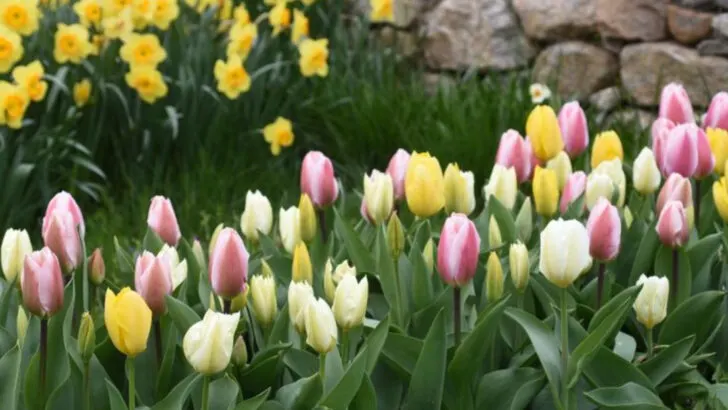You don’t need a professional to create a garden that turns heads—you just need the right plant pairings. When certain flowers, shrubs, and textures come together in the same space, they instantly create that high-end, designer look most of us scroll past in envy.
These 17 foolproof garden combos are built around contrast, color harmony, and seasonal balance—without requiring years of experience or a landscaping budget. Think lush greenery with bold blooms, tall grasses beside trailing vines, and just enough structure to make it feel intentional (but never stiff).
Best of all, each of these combos works in real-life gardens—from tiny courtyards and balconies to front yards and back borders. Whether you’re starting fresh or just want to elevate what you’ve got, these pairings will make people ask, “Wait, who designed this for you?”
Lavender and Roses
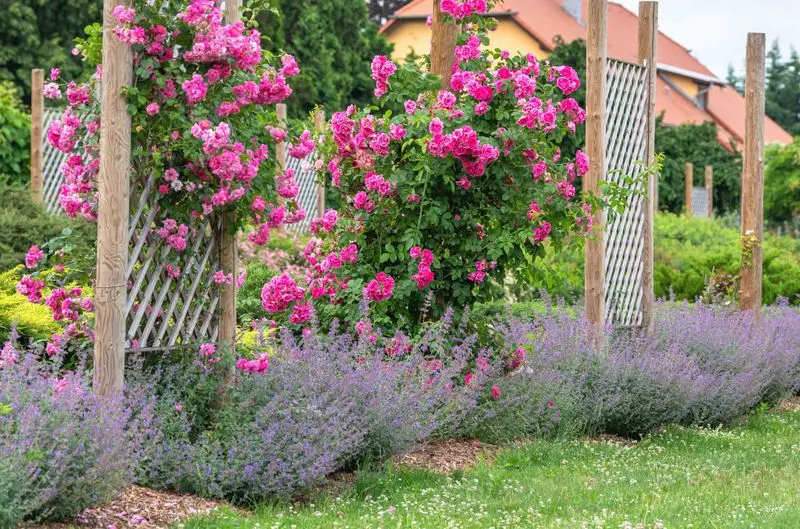
Imagine a garden filled with the scent of lavender and the classic beauty of roses. This pairing creates a sensory delight, offering both fragrance and visual harmony. The soft purple hues of lavender contrast elegantly with the vibrant colors of roses, providing a timeless appeal.
Lavender’s hardy nature complements the delicate roses, making them perfect companions. This duo thrives in well-drained soil and sunny spots, bringing a touch of Provence to your backyard. Did you know? Lavender has been used since Roman times for its soothing scent and medicinal properties.
Together, these plants create a romantic and inviting atmosphere, ideal for relaxing evening strolls.
Hostas and Ferns
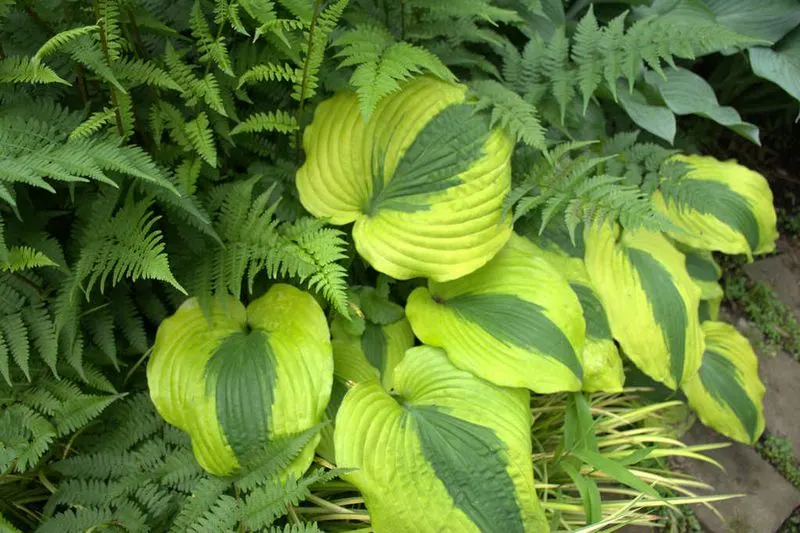
Shade gardens often feel like a hidden retreat, and hostas paired with ferns bring this idea to life. Hostas provide bold foliage with striking patterns, while ferns add a touch of whimsy with their feathery fronds. Their varying textures create depth and interest.
Both plants thrive in similar conditions—preferring shade and moist soil—making them a match made in garden heaven. Hostas are known for their resilience and come in numerous varieties, ensuring a unique look.
Together, they form an enchanting, low-maintenance oasis that offers cool serenity on hot summer days.
Succulents and Grasses
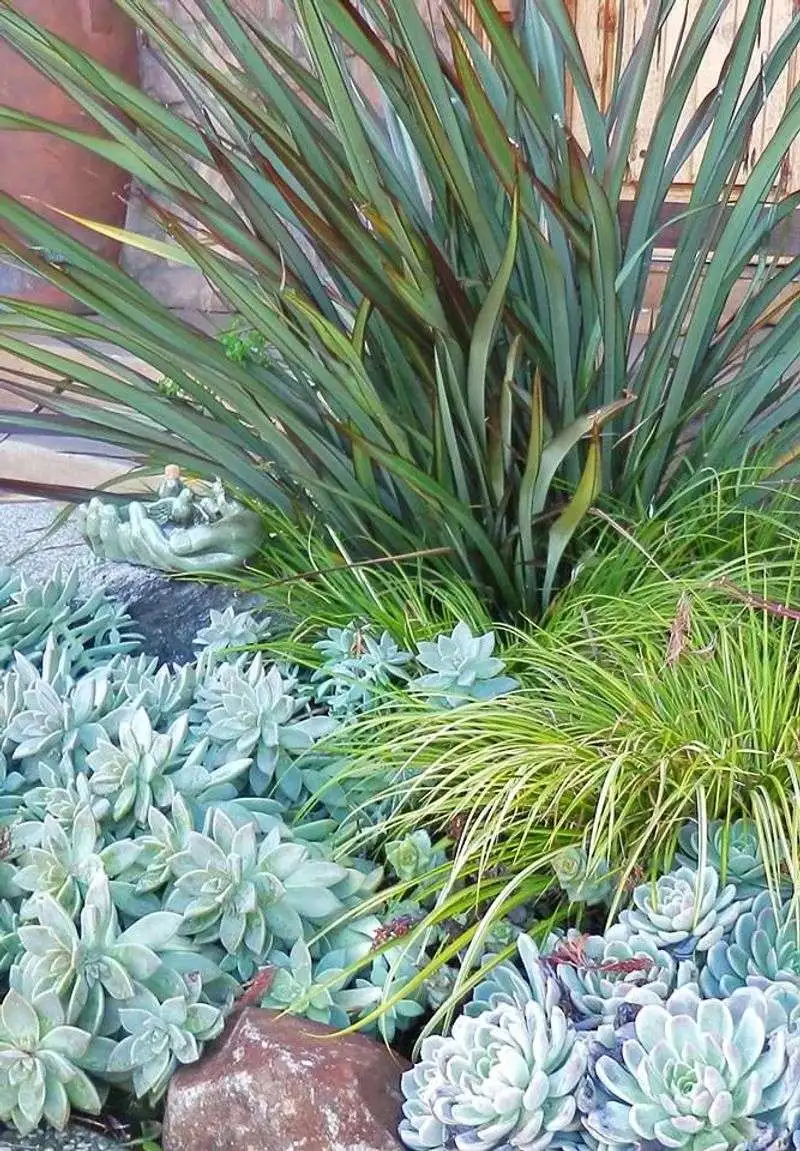
For a contemporary garden look, the combination of succulents and ornamental grasses provides a striking visual. Succulents offer sculptural shapes and water-saving qualities, while grasses sway gracefully with the breeze. Their synergy lies in contrasting forms and textures.
Both thrive in sunny, dry conditions, making them ideal for xeriscaping and low-maintenance gardens. The variety in succulent colors and grass heights allows for endless creativity.
This combo not only conserves water but also adds a sophisticated touch to your garden, perfect for those seeking modern elegance with minimal effort.
Peonies and Irises
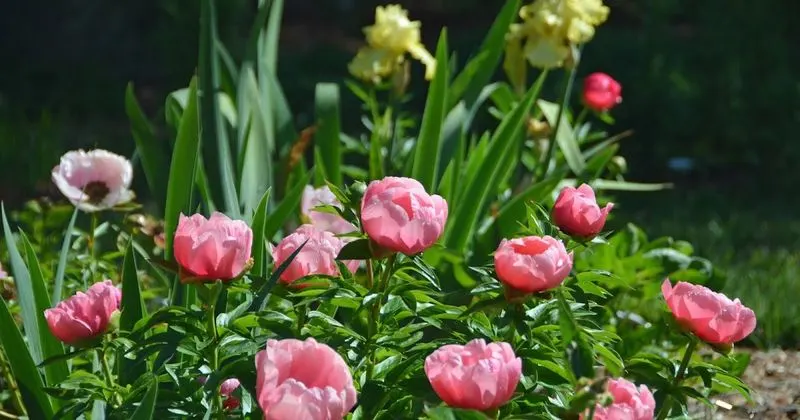
Peonies and irises create a springtime spectacle with their vibrant blooms and lush green leaves. Peonies offer large, fragrant flowers that captivate the senses, while irises provide striking shapes and diverse colors. Together, they celebrate the season’s renewal.
These perennials thrive in well-drained soil and full sun, rewarding gardeners with spectacular displays year after year. Peonies are treasured for their longevity, often living for decades.
Pairing them with irises results in a dynamic duo that adds layers of color and texture, transforming any garden into a breathtaking haven.
Hydrangeas and Daylilies
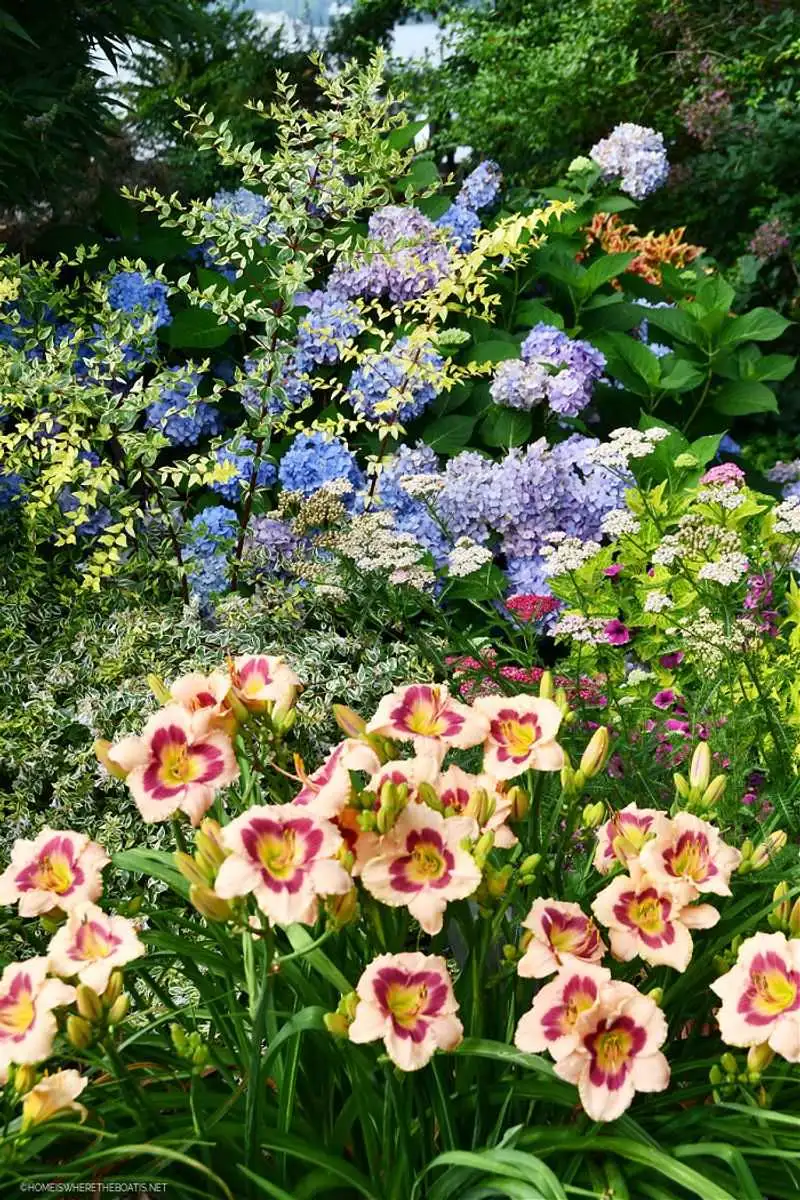
Hydrangeas and daylilies create a garden full of color and charm. Hydrangeas are known for their voluminous blooms and can change color based on soil pH, offering a unique twist. Daylilies, with their trumpet-shaped flowers, provide a delightful contrast.
Both plants are easy to grow, adapting well to a range of conditions. Hydrangeas prefer morning sun and afternoon shade, while daylilies thrive in full sun.
Together, they attract pollinators and add a burst of joy to your garden, making them a favorite among gardeners seeking vibrant and easy-care combinations.
Tulips and Daffodils
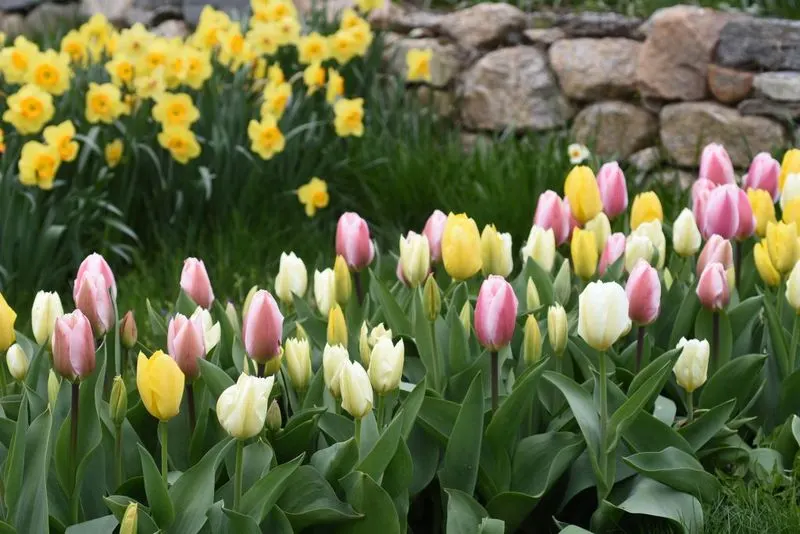
Spring heralds new beginnings, and nothing captures this better than tulips and daffodils. Bursting with color, tulips offer endless variety, while daffodils bring sunshine with their vibrant yellows. This combo celebrates the season with a joyful display.
Both bulbs are easy to plant and maintain, thriving in well-drained soil and full sun. Planting them together ensures a longer blooming period, as daffodils often bloom before tulips.
Their cheerful presence not only brightens gardens but also lifts spirits, making them a must-have for those seeking a seasonal spectacle.
Boxwood and Roses
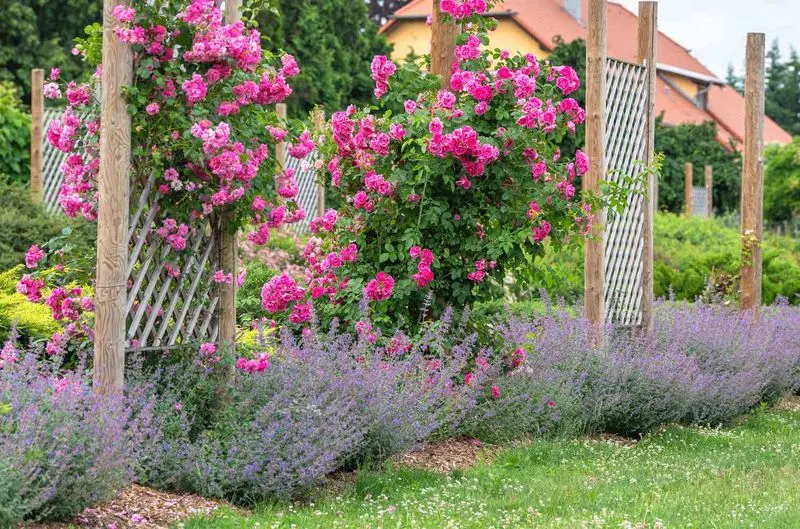
Boxwood hedges and roses compose a classic garden partnership that exudes elegance. Boxwood offers structure with its evergreen foliage, while roses add romance with their blossoms. This classic combination is reminiscent of traditional English gardens.
Both plants complement each other perfectly, with boxwood defining spaces and roses adding softness. They thrive in sunny spots with well-drained soil, creating a timeless atmosphere.
Together, they bring a sense of order and beauty, appealing to those who appreciate structured yet inviting outdoor spaces.
Lilies and Hostas
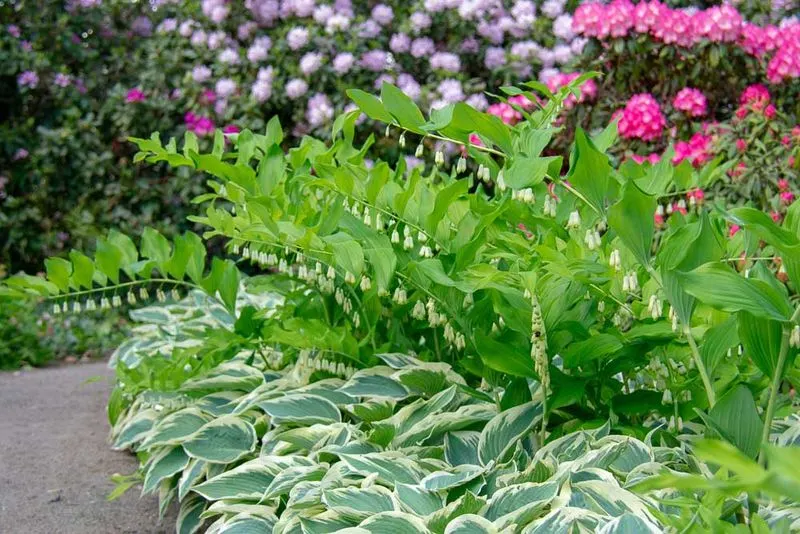
Lilies and hostas bring together color and texture in a delightful garden combo. Lilies, with their exotic blooms, stand out vividly against the lush backdrop of hostas. Hostas, known for their varied leaf patterns, provide a perfect canvas.
This pairing thrives in partial shade and moist soil, allowing the lilies to shine without competing for attention. Hostas’ robust nature complements the delicate elegance of lilies.
By combining these plants, gardeners can create a dynamic display that appeals to both the eyes and the senses, offering a peaceful retreat.
Clematis and Climbing Roses
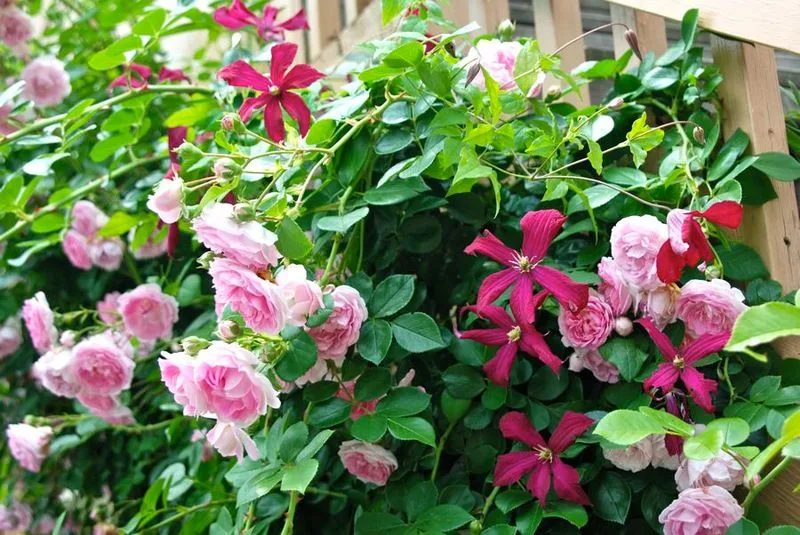
Climbing roses and clematis are a match made in heaven, creating vertical interest in any garden. Clematis offers a profusion of flowers in varied hues, while roses bring classic beauty. Together, they transform trellises and arches into works of art.
Both thrive in similar conditions, preferring sunny spots and rich soil. Their intertwined growth habit enhances structures, adding depth and color.
By combining these climbers, gardeners can craft enchanting focal points, offering a touch of magic and romance to their outdoor spaces.
Marigolds and Vegetables
Companion planting with marigolds and vegetables offers beauty and utility. Marigolds, with their bright blooms, act as natural pest deterrents, safeguarding your vegetables. Their vibrant colors add cheerfulness to a productive garden.
This combination thrives in sunny locations with well-drained soil. Marigolds are easy to grow and have a longstanding reputation in vegetable patches for their protective qualities.
Together, they create a harmonious garden that looks good and functions well, appealing to both novice and experienced gardeners seeking a sustainable approach.
Orchids and Bromeliads
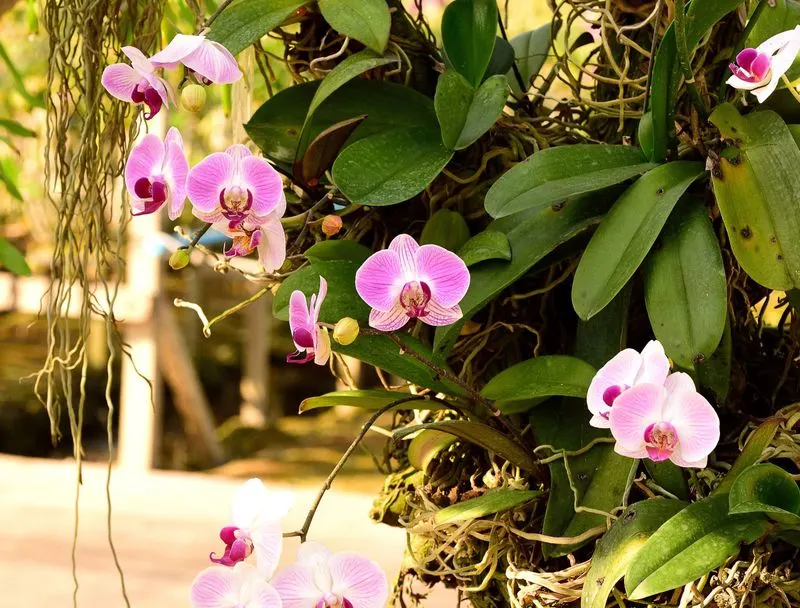
For a touch of the exotic, orchids and bromeliads offer a striking garden combo. Orchids provide intricate blooms with a delicate beauty, while bromeliads add bold shapes and vibrant colors. This pairing brings a tropical flair to shaded areas.
Both plants thrive in humid conditions and dappled shade, making them ideal for creating a lush under-canopy garden. Orchids are known for their epiphytic nature, often growing on trees.
Combined, they create an intriguing and colorful display, perfect for those looking to escape to an exotic paradise without leaving home.
Azaleas and Rhododendrons
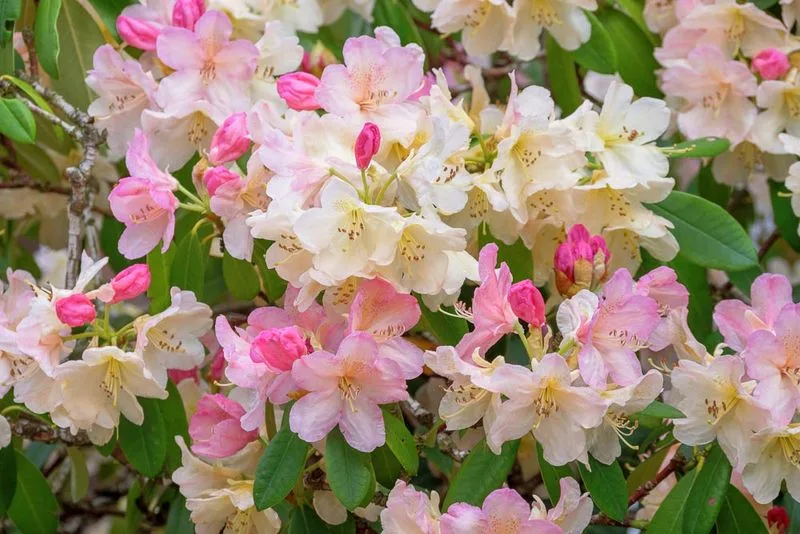
Azaleas and rhododendrons create a woodland wonderland with their showy blooms and evergreen leaves. Azaleas offer vibrant colors in spring, while rhododendrons provide larger, lush flowers. Together, they form a dynamic duo that thrives in acidic soil.
This combination flourishes in dappled shade, making them perfect for woodland gardens. Both plants are low-maintenance and provide year-round interest with their foliage.
By choosing these plants, gardeners can transform shaded areas into colorful retreats, inviting visitors to enjoy a serene and enchanting environment.
Herbs and Wildflowers
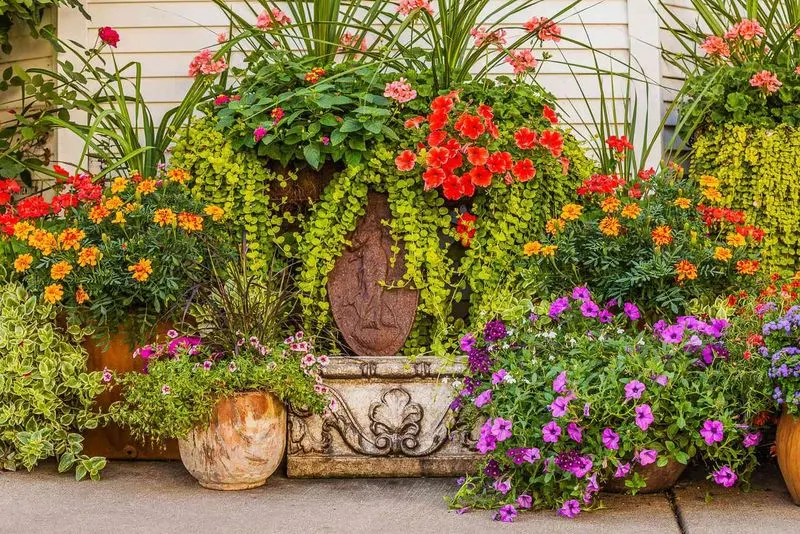
For a garden that offers both beauty and utility, herbs and wildflowers are a perfect match. Herbs like lavender and thyme provide fragrance and culinary uses, while wildflowers bring bursts of color and attract pollinators.
This combination thrives in sunny spots with well-drained soil, offering a carefree and natural look. Wildflowers are known for their resilience and ability to self-seed, ensuring a changing display each year.
Together, they create a vibrant and functional garden, appealing to those who love the charm of a cottage garden infused with vibrant life.
Butterfly Bush and Coneflowers
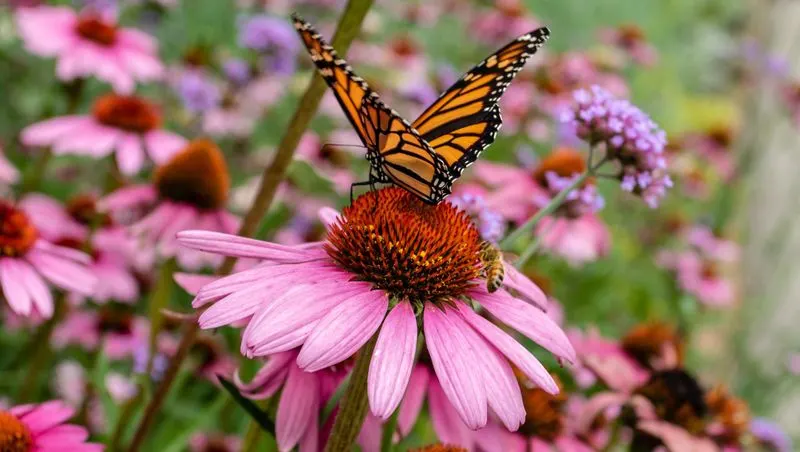
Attracting butterflies and bees, a garden with butterfly bushes and coneflowers is a lively ecosystem. Butterfly bushes provide long spikes of fragrant flowers, while coneflowers add bold, daisy-like blooms.
Both plants thrive in full sun and are drought-tolerant, making them low-maintenance choices. Their long blooming periods ensure a continuous display of color and activity.
By combining these plants, gardeners create a vibrant space that supports local wildlife, offering aesthetic pleasure and ecological benefits.
Japanese Maple and Heuchera

Japanese maples paired with heuchera create a garden of contrasting colors and textures. The maple’s delicate, lacy leaves offer a striking backdrop, while heuchera adds low-growing mounds of vibrant foliage.
Both plants thrive in partial shade and well-drained soil, bringing a sense of tranquility and elegance. Japanese maples are prized for their seasonal color changes, enhancing the heuchera’s year-round appeal.
Together, they form a harmonious garden corner that captivates the eye, providing a peaceful retreat with a touch of Japanese elegance.
Zinnias and Dahlias
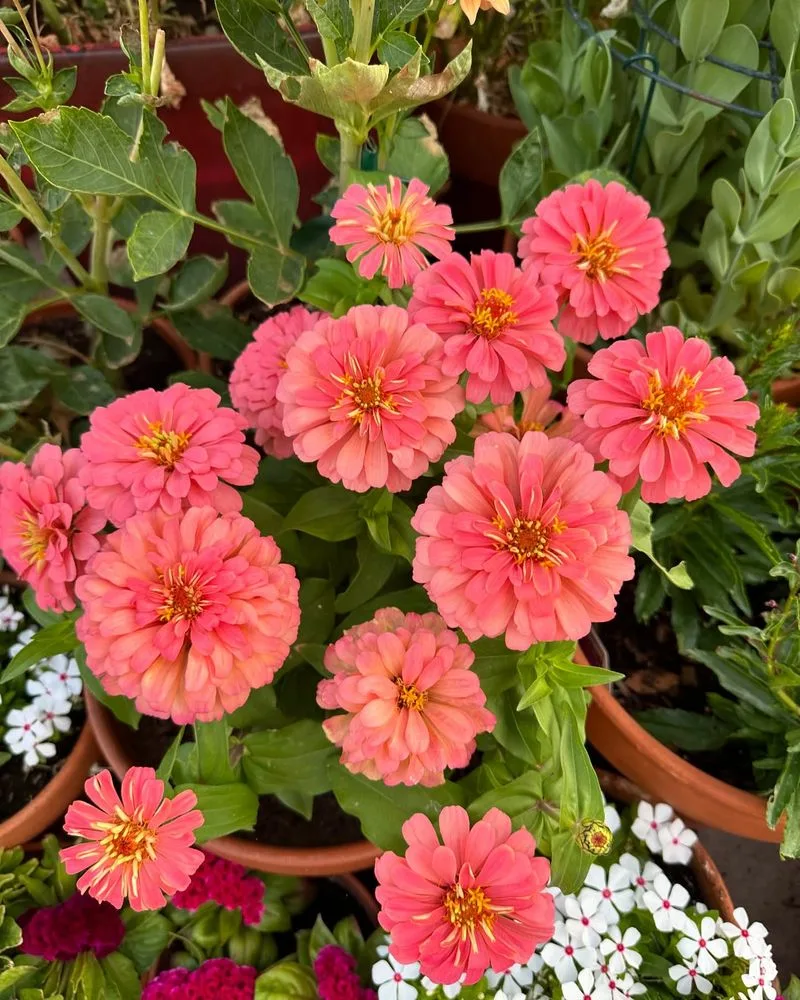
Zinnias and dahlias create a summer spectacle with their vibrant blooms and diverse shapes. Zinnias offer bright colors and long-lasting flowers, while dahlias provide intricate designs and bold forms.
Both thrive in sunny spots and well-drained soil, attracting pollinators and adding dynamic color to gardens. Their varied heights and shapes allow for creative arrangements.
By pairing these flowers, gardeners can enjoy a lively display that celebrates summer’s abundance, ideal for cutting gardens or brightening up any outdoor space.
Geraniums and Petunias
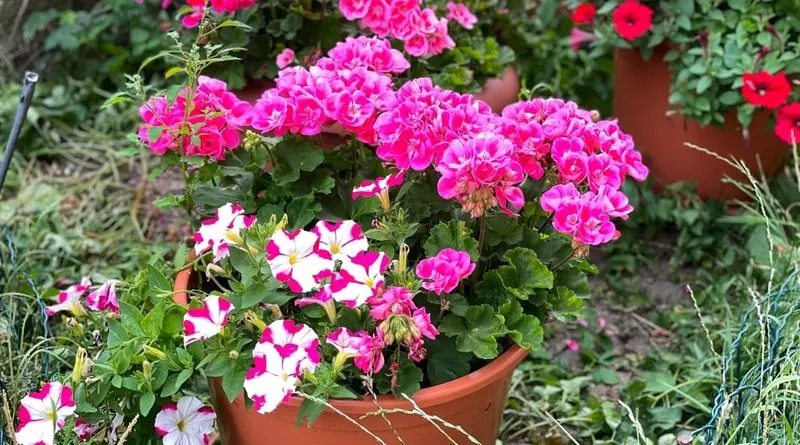
Geraniums and petunias bring a splash of color to any garden with their vibrant flowers and easy-care nature. Geraniums are known for their continuous blooms and range of colors, while petunias offer a cascade of floral beauty.
Both plants thrive in sunny locations and are versatile choices for containers or garden beds. Their complementary growth habits ensure a full and lively display.
Together, they create a welcoming atmosphere that brightens gardens and patios, perfect for those seeking an effortless yet impactful floral arrangement.

